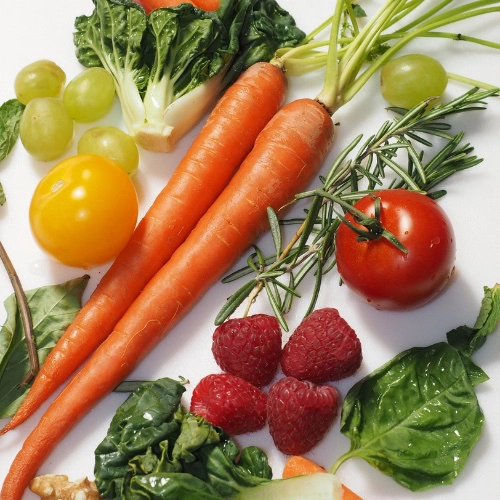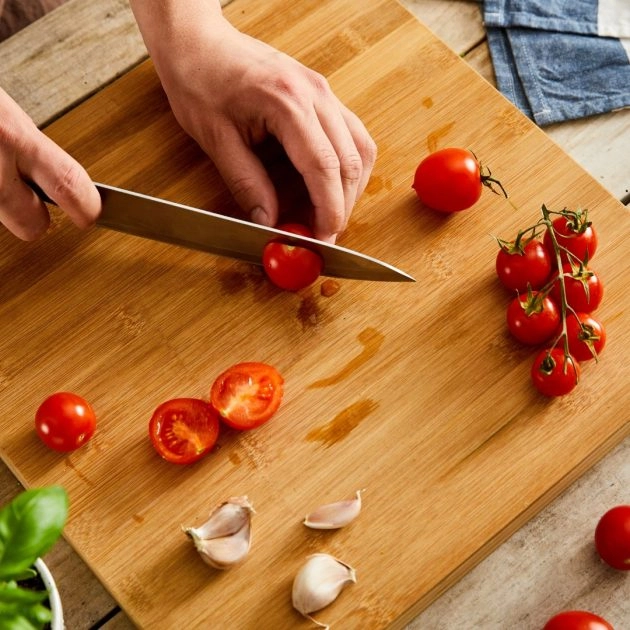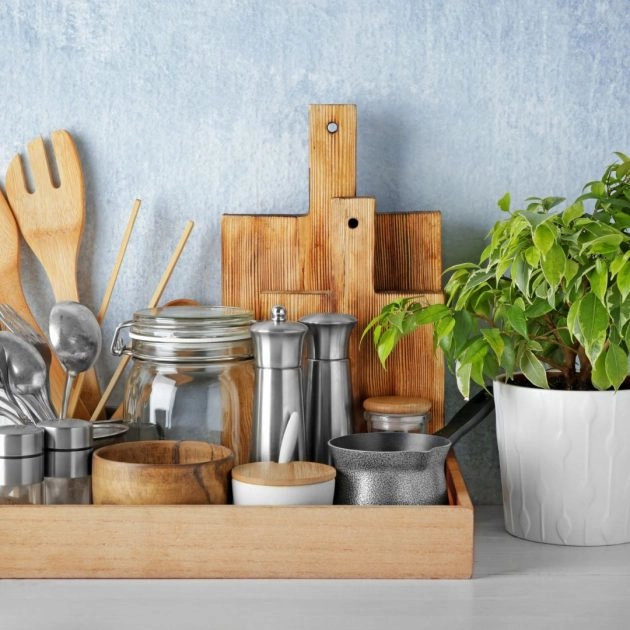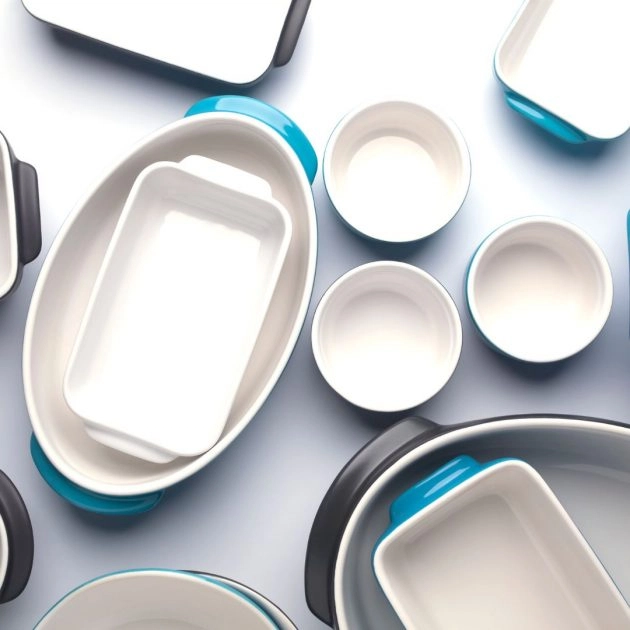INTRODUCTION: TOXIN EXPOSURE
Chemical and toxin exposure seems unavoidable these days — even in your kitchen! The way that you prep your food can expose food to potential toxins. The biggest concern for chemical exposure when it comes to food is your cookware. Because your cookware is used to heat your food, the heat adds an increased risk of toxin exposure.
PRODUCE PREP

Did you know that the skins of your produce are packed with nutrients as are the areas right where the skin meets the flesh? This means you want to “keep the skin on” more often but it also means you need to make sure you’re properly washing and rinsing produce before eating – whether you remove the skin or not. Regardless of what type of ready-to-eat produce you purchase you should be washing before preparing and eating.
At a minimum, rinse all your produce under warm water. For tougher produce like carrots or potatoes, scrubbing them with a vegetable brush will help to remove any residue or chemicals on the surface. For softer produce like strawberries or zucchini, you can spray them with a mixture of water and vinegar before rinsing to help remove any contaminants prior to eating.
CUTTING BOARDS

Do you often do a lot of chopping with meats and vegetables? Though plastic cutting boards are rather convenient, they also get damaged a lot easier than wooden boards do. Those small cuts in your plastic cutting boards may result in very small pieces of plastic ending up in your food.
Ideally, prep both your veggies and meats on a quality solid wooden cutting board (look for maple, walnut, beech, or teak woods) or a natural rubber board. Natural rubber, like wood, is a win as long as no one in your home has a latex allergy.
Note that the lightweight “epicurean” wood boards may seem like a convenience win, but they use phenol resins as binders. It’s also better to avoid those touted as “antibacterial” as they typically contain triclosan (Microban), a likely endocrine disruptor and possible carcinogen.
Did you know that wood is actually antibacterial naturally, absorbing and having bugs die in 10-15 minutes? Likewise, while bamboo may seem the eco-health favorite, these boards often have melamine-formaldehyde so skip or get one without. Bamboo isn’t a better everyday cutting board as it’s much harder than wood and likely to wear down your knives.
Remember: Don’t put your wood or natural rubber cutting boards in the dishwasher, instead wipe down and use food-grade mineral oil often on wood to protect and maintain its integrity.
COOKING UTENSILS

If you’ve upgraded your pans to non-toxic alternatives, amazing! But are you still using your old plastic spatulas? Don’t forget, the utensils that you use to stir fry and flip our food are coming in contact with hot surfaces, so it’s best to avoid using plastic ones where possible. For traditional cast iron or stainless steel cookware, you can safely use wooden or stainless steel utensils.
However, on non-toxic, non-stick cookware, you’re going to want to avoid metal as it may scratch the surface of your pans. To safely maintain the integrity of your cooking surface, I recommend using either wooden or silicone utensils.
BAKEWARE

Do you roast veggies on a baking pan or whip up pastries once in a while? Chances are, the baking pans that you have in your kitchen contain a chemical or two. In general, most of the baking sheets and cake pans are aluminum. It does not “off-gas” but you want to avoid aluminum touching our food, if possible.
For an easy fix, simply line your baking sheets with unbleached parchment paper. Pick some up next time you go shopping and then line your baking sheet pan with it next time you roast veggies. Not only is it a safer material, but it also makes for easy clean-up!
POTS AND PANS

Though using non-stick cookware may be convenient, the biggest concern for toxin exposure when cooking is use of non-stick cookware. Most non-stick cookware contains chemicals like PFAS, which begin to break down when heated to high temperatures.
This can cause particles and gasses that have been linked to certain cancers to be released. And even with diligent care, this non-stick coating scratches, allowing the chemicals to flake off into your food. Ick! Some newer non-stick pans utilize a ceramic coating but they are not all created equal.
They can have nano-particles (tiny chemical particles) that can be absorbed via your food. If you are looking for non-stick products you will want to evaluate your choice to ensure that they are also non-toxic. Look for pans that are free of PFAS, PFOA, PTFE, GenX chemicals, lead, and cadmium and do not contain nano-particles.
Though these items may cost more in the short term, with care and proper handling, these pans will last longer than the cheaper versions. Other classic cookware pans like stainless steel and enameled cast iron are also great non-toxic alternatives.
Conclusion
Despite the irrefutable usefulness of synthetic materials like plastics, you’re now aware that these substances have the potential to cause negative impacts not only on the environment but also on our health.
Based on some estimates, about 6% of the world’s diseases and 8% of deaths can be linked back to chemical exposure. But these estimates only take into consideration a small number of chemicals whose effect on health is well established.
As our population ages and has additional exposure to the extensive amount of chemicals that have been introduced over the last 50+ years, it’s likely these numbers could grow significantly. And this is not better
Toxin exposure in the kitchen is only one of many environmental triggers for inflammation. If you feel like you need more personalized attention and help in getting to the root cause of your health problems, I’d love to work with you. You can learn more about my packages here.

